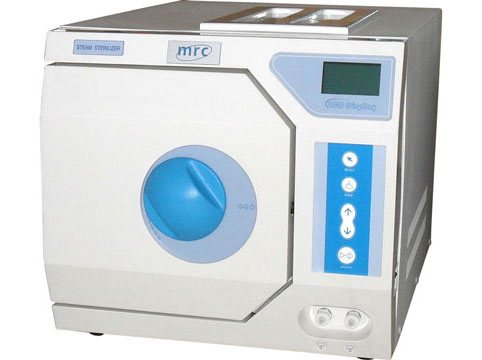By using a high-pressure steam, an autoclave offers a physical method of sterilizing that destroys viruses, bacteria, and even spores that are present in the material put within the vessel. The autoclave sterilizes the material by heating it to a certain temperature for a predetermined amount of time. Due to its reliance on the idea of moist heat sterilization, the autoclave is believed to be an effective technique of sterilization. The autoclave is also known as a steam sterilizer, which is employed regularly in hospitals, Dental clinics, beauty salons and cosmetics, jewelers and more industrial institutions
The components of an autoclave include a pressure chamber, pressure releasing unit, pressure gauge, electrical heater, wastewater cooler, and safety valve.
Applications of Autoclave:
Since water-containing substances cannot be sterilized with dry heat, autoclaves are essential for their sterilization. Autoclaves may also be used for a number of other purposes. Autoclaves may also be used to sterilize autoclavable culture medium containers, plastic tubes, and pipette tips. In medical laboratories, autoclaves are used to sterilize glassware, medical equipment, and surgical equipment, as well as medical waste. Sterilization and disinfection of dental utensils, jewelry, utensils in beauty salons

Some important concepts about autoclave
- It works based on the principle of wet heat sterilization, in which disinfection of the materials contained within the chamber is done with steam pressure.
- Higher pressure enhances the temperature of boiling water, hence facilitating the attainment of the optimal sterilizing temperature.
- At normal atmospheric pressure, water boils at around 100 degrees Celsius; however, its boiling temperature is directly proportional to the pressure.
- The pressure may also accelerate the spread of heat to deeper layers of material, and the moisture in the steam causes the production of proteins, resulting in the irreversible loss of function.
- As per the concept used in an autoclave, at a pressure of 15 psi or 775 mm of Hg, the water boils at 121 degrees Celsius.
- If this steam comes into contact with surfaces, the latent heat generated kills microorganisms.
- Condensed liquids guarantee that the vast majority of bacteria are eliminated.
- When the sterilizing process is complete, the pressure is released from the chamber's interior by blowing the whistle. The inside components stay heated for some time while the chamber's pressure returns to normal.

Types of Autoclaves:
- Positive pressure displacement type (B-type)
In this autoclave, steam is created by an independent steam generator, which is then pushed through the autoclave. It is an improvement over the gravity displacement model since steam can be produced in a matter of minutes. Safety valve, Pressure protection system, temperature
protector of chamber walls.
- Laboratory bench / pressure cooker type autoclaves (N-type)
Domestic pressure cookers are commonly used in many regions of the world. The most up-to-date model has a metal chamber with a metal top that can be fastened and sealed by an air gasket. In addition, an electric heater is positioned at the chamber's base. Volume:12-23 Liter . Especially suitable for veterinarians, schools, tattoos and beauty salons

General operating instructions
In general, an autoclave should operate at 121 ° C for at least 30 minutes, utilizing saturated steam at a pressure of at least 15 psi. While using an autoclave, these protocols must be followed:
- Prior to use, the autoclave must be examined for any residue from previous cycles. A sufficient volume of water should be put into the chamber thereafter.
- Materials requiring sterilization should be then placed.
- The lid should be then closed and tightened to guarantee airtightness, and the activation of the electric heater should be done.
- The safety valves should be adjusted to maintain the correct pressure in the chamber.
- Once the water in the chamber boils, the combination of air and water is discharged down the tube, displacing all the air inside. Once the water stops bubbling out of the pipe, the displacement is completed.
- After this, the drain pipe is shut, and the desired level of steam is allowed to rise inside.
- The whistle will blow to release any remaining pressure in the chamber when the desired pressure is reached.
- In the majority of instances, the autoclave will be run for a holding period of fifteen minutes after the whistle.
- The electric heater is switched off, and until the gauge shows that the internal pressure has reached atmospheric pressure, the autoclave is allowed to cool down.
- The pipe for discharge is then opened for the entry of air into the autoclave from the outside.
- The chamber's lid is then opened, and the sterilized substances are removed.